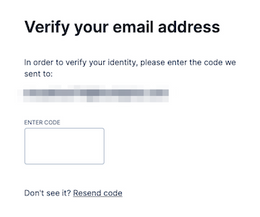Email validation is a crucial part of any application that collects user information. Whether you’re building a contact form, user registration system, or an email subscription service, ensuring that users enter valid email addresses is essential for maintaining data integrity and preventing spam. In this guide, we will walk you through the various ways to implement email validation in PHP, using different methods and best practices.
Why Email Validation is Important
Ensuring that users enter a valid email address can help prevent a variety of issues:
- Preventing Spam: Invalid or fake emails can lead to spam or unwanted automated signups.
- Improved Communication: A valid email address ensures that users can receive critical communications, such as password resets or notifications.
- Data Accuracy: Valid email addresses help maintain the integrity of the data, which is important for analytics and user engagement.
Let’s explore the most effective ways to perform email validation in PHP and discuss why these methods are vital for both security and user experience.
Methods of Email Validation in PHP
There are several ways to validate email addresses in PHP. These methods range from simple to more robust solutions depending on the level of validation you need.
1. Basic Validation Using filter_var()
One of the simplest and most effective ways to validate email addresses in PHP is by using the filter_var() function. This built-in PHP function checks if an email address is valid based on the standard email format.
Here’s an example of how to use filter_var() for email validation:
In this example, the FILTER_VALIDATE_EMAIL filter is used to check whether the provided email address is in a valid format. If the email address is valid, the function returns true; otherwise, it returns false.
2. Regular Expression (Regex) Validation
While filter_var() is great for basic validation, you may want more control over the validation process. This is where regular expressions (regex) come in handy. Regex allows you to define a specific pattern that the email address must match.
Here’s an example of using regex for email validation in PHP:
This method is more flexible and allows you to customize the validation based on specific rules. However, regular expressions can be difficult to maintain, especially if the rules for email addresses change.
3. Domain Validation
Validating the format of an email address is not enough to ensure its legitimacy. You may also want to verify whether the domain part of the email address (i.e., the part after the “@” symbol) exists. PHP provides the checkdnsrr() function, which checks the DNS records to confirm whether the domain is valid and has an MX (Mail Exchange) record.
Here’s how you can validate an email domain using checkdnsrr():
This method combines format validation with domain verification to ensure that the email address is both correctly formatted and points to a valid mail server.
4. Temporary Email Address Detection
Another challenge when validating email addresses is preventing the use of temporary or disposable email services, such as mailinator.com or 10minutemail.com. These services allow users to create temporary email addresses, which can lead to invalid data or difficulty in maintaining communication.
To prevent this, you can create a list of known disposable email domains and check whether the provided email address belongs to one of these domains:
This method can help you filter out users who might be using temporary or fake email addresses to sign up for your service.
Best Practices for Email Validation in PHP
Email validation is more than just checking the format of an email address. To ensure robust validation, follow these best practices:
1. Use Multiple Validation Methods
Combining multiple validation methods—such as format validation, domain validation, and temporary email detection—provides a more thorough validation process. This can help reduce spam signups and improve the quality of user data.
2. Provide Clear Error Messages
If an email address fails validation, provide the user with a clear error message that explains why their input was rejected. This improves user experience and ensures that users can correct their mistakes easily.
3. Avoid Over-Validation
While it’s important to ensure that email addresses are valid, over-validating can lead to false negatives. For instance, rejecting legitimate email addresses because they don’t fit a specific regex pattern can frustrate users. Stick to widely accepted validation methods like filter_var() unless you have a good reason to impose stricter rules.
4. Validate on Both Frontend and Backend
Although frontend validation is useful for providing instant feedback to users, backend validation is crucial for ensuring data integrity. Always validate the email address on the server side before processing or storing it.
5. Regularly Update Your Validation Logic
Email standards and best practices can evolve over time. Keep your validation logic up-to-date to ensure that your system continues to work effectively as new email rules and patterns emerge.
Conclusion
Email validation in PHP is an essential task for ensuring that user-provided data is accurate, legitimate, and safe from abuse. By using a combination of methods like filter_var(), regex validation, domain verification, and temporary email detection, you can build a robust email validation system that prevents spam and improves data quality.
Remember that no single method is perfect, so combining multiple approaches is often the best way to achieve comprehensive email validation. By following the best practices outlined in this article, you can implement secure and user-friendly email validation in your PHP applications.









